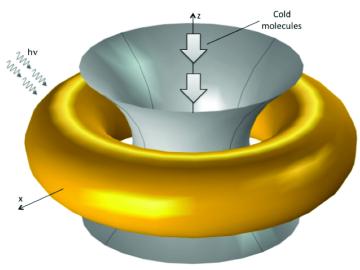Filter News
Area of Research
- (-) Supercomputing (20)
- Advanced Manufacturing (3)
- Biological Systems (3)
- Biology and Soft Matter (1)
- Building Technologies (2)
- Chemical and Engineering Materials (2)
- Chemistry and Physics at Interfaces (6)
- Clean Energy (41)
- Computational Chemistry (1)
- Energy Frontier Research Centers (7)
- Functional Materials for Energy (6)
- Fusion Energy (1)
- Geographic Information Science and Technology (2)
- Isotope Development and Production (1)
- Materials (39)
- Materials Synthesis from Atoms to Systems (5)
- Materials Under Extremes (6)
- Neutron Data Analysis and Visualization (2)
- Neutron Science (10)
- Nuclear Science and Technology (6)
- Quantum Condensed Matter (2)
- Reactor Technology (1)
- Transportation Systems (2)
Media Contacts

Steady progress in the development of advanced materials has led to modern civilization’s foundational technologies—better batteries, resilient building materials and atom-scale semiconductors. Development of the next wave of materials, however, is being slowed by the sheer co...

Harvesting oil, mitigating subsurface contamination, and sequestering carbon emissions share a common thread—they deal with multiphase flows, or situations where materials are flowing close together in different states (solids, liquids, or gases) or when the flow is comprised ...

Single atoms or molecules imprisoned by laser light in a doughnut-shaped metal cage could unlock the key to advanced storage devices, computers and high-resolution instruments.
In a paper published in Physical Review A, a team composed of Ali Passian of the Depa...

Viruses are tiny—merely millionths of a millimeter in diameter—but what they lack in size, they make up in quantity.

A microscope being developed at the Department of Energy’s Oak Ridge National Laboratory will allow scientists studying biological and synthetic materials to simultaneously observe chemical and physical properties on and beneath the surface.

Piranha, an award-winning intelligent agent-based technology to analyze text data with unprecedented speed and accuracy, will be showcased at the Smithsonian’s Innovation Festival Sept. 26-27. The Oak Ridge National Laboratory technology, which received an R&D 100 Award in 2007,...

Lightweight powertrain materials could play a hefty role in helping automakers meet stricter Corporate Average Fuel Economy standards, and Oak Ridge National Laboratory’s supercomputer could accelerate their deployment. Working with industry, ORNL researchers are developing material...

Groundbreaking work at two Department of Energy national laboratories has confirmed plutonium’s magnetism, which scientists have long theorized but have never been able to experimentally observe. The advances that enabled the discovery hold great pro...

Researchers at the Department of Energy’s Oak Ridge National Laboratory have developed a population distribution model that provides unprecedented county-level predictions of where people will live in the U.S. in the coming decades.

Scientists at the US Department of Energy’s Oak Ridge National Laboratory are learning how the properties of water molecules on the surface of metal oxides can be used to better control these minerals and use them to make products such as more efficient semiconductors for organic light emitting diodes and solar cells, safer vehicle glass in fog and frost, and more environmentally friendly chemical sensors for industrial applications.




